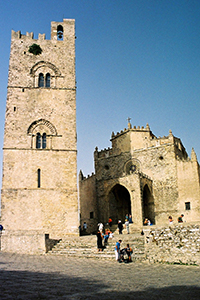Speaker
Description
Molecular imaging affords valuable information about biological processes at the molecular and cellular levels within complex living organisms and can help in earlier diagnostics of various diseases. Optical imaging modalities such as fluorescence imaging play a key role for preclinical research. Furthermore, new fluorescence imaging tools have a potential for clinical translation.
In this work, a fluorescent fatty acid probe was developed and applied as a tool for in vivo tumor imaging (1). Several tumors such as glioma may be dependent on the uptake of extracellular long-chain fatty acids (2-3). Hence, fatty acids can be envisioned as tumor-targeting ligands for the design of tumor imaging probes. Based on this idea, a near-infrared fluorescent fatty acid probe ICG-FA was developed. The probe comprises a long-chain fatty acid conjugated to an analog of a near-infrared dye indocyanine green (ICG). In vitro studies in cells demonstrated that the ICG-FA probe mimics the uptake of natural fatty acids and exhibits significant accumulation in glioma cells compared to that of the free ICG dye. Next, ICG FA was successfully applied for glioma imaging in living mice, where it showed significant tumor targeting. Moreover, in a proof-of-concept study ICG-FA was tested for intraoperative fluorescence image-guided surgery in a canine patient bearing mastocytoma. The probe enabled intraoperative tumor imaging and afforded a real-time visual guidance for a surgeon during the tumor resection. The results suggest that ICG-FA has a potential as a diagnostic agent for intraoperative imaging of gliomas and other tumors with increased fatty acid uptake.
-
G. Karateev, Novel Molecular Probes for Non-invasive Optical Imaging of Fatty Acid and Triglyceride Uptake in Living Animals. Doctoral dissertation. Ecole Polytechnique Fédérale de Lausanne, 2019.
-
K. Bensaad et al. Fatty acid uptake and lipid storage induced by HIF-1alpha contribute to cell growth and survival after hypoxia-reoxygenation. Cell. Rep. 2014; 9: 349-365.
-
H. Lin et al. Fatty acid oxidation is required for the respiration and proliferation of malignant glioma cells. Neuro Oncol. 2017; 19: 43-54.
Contributions and acknowledgements.
1. Dr. Ksenya Shchors (collaboration on glioma imaging in transgenic mouse models).
2. Dr. Arno Roos, Veterinair Verwijscentrum Gouda, Netherlands (collaboration on mastocytoma imaging in dogs).
3. Prof. Elena Goun, LCBIM, EPFL (the presented results belong to the laboratory of Prof. Goun).
4. Prof. Christian Heinis, LPPT, EPFL.
